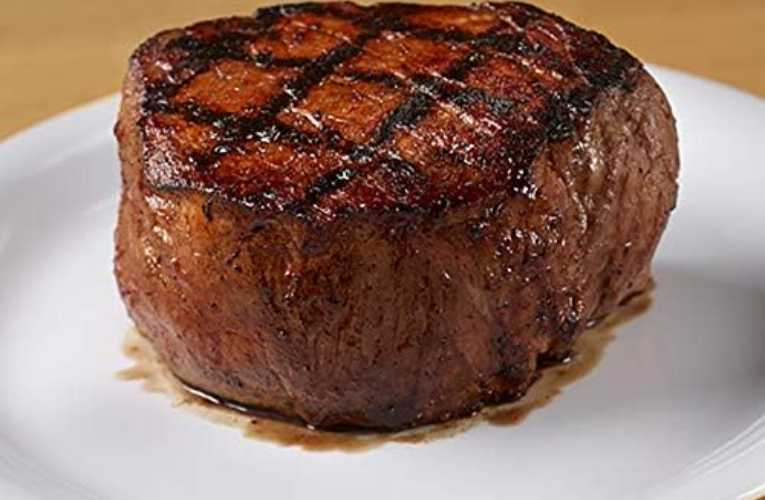The world of steaks offers a wide range of options, from different cuts and cooking methods to various sizes. When it comes to ordering or cooking steaks, understanding the sizes is crucial for ensuring a satisfying dining experience.
In this comprehensive guide, we will delve into the details of two popular steak sizes: 8 oz and 5 oz. By the end of this article, you’ll have a clear understanding of what these sizes represent, how they look, and how to choose the right one for your preferences and needs.
The Basics of Steak Weights:
To comprehend the size of steaks, it’s essential to grasp the basics of measuring their weight accurately. The standard unit of measurement for steaks is the ounce (oz). Here, we’ll provide a brief explanation of the ounce and its relationship with other common measurements.
Understanding Ounces:
An ounce is a unit of weight measurement. In culinary contexts, it is typically used to measure solid ingredients, including steaks. One ounce is equivalent to approximately 28.35 grams or 0.0625 pounds (lbs).
Differentiating Weight and Volume:
It’s crucial to understand the difference between weight and volume when discussing steak sizes. While weight refers to the mass of an object, volume measures the amount of space it occupies. In the case of steaks, we focus on weight rather than volume.
Converting Ounces to Other Measurements:
Converting steak weights to different measurement units can be helpful for better understanding and comparison. Here are some common conversions:
- Grams: 1 ounce is approximately equal to 28.35 grams.
- Pounds: 16 ounces make up 1 pound (lb). Therefore, 8 oz is half a pound, and 5 oz is a little over a quarter of a pound.
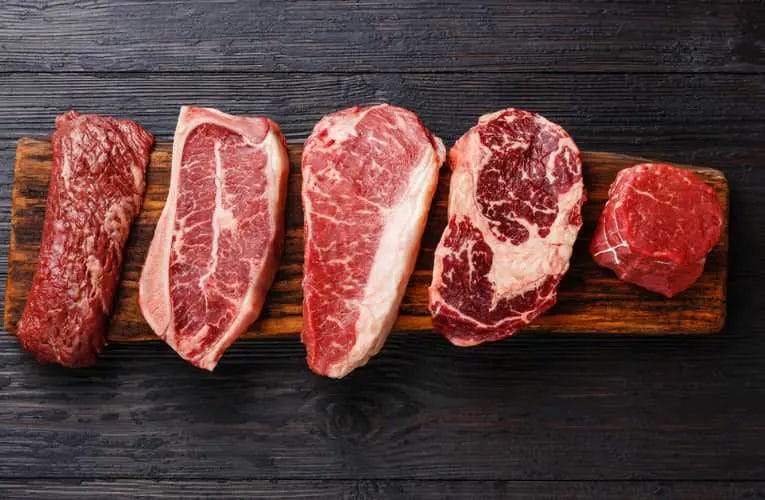
Defining Steak Sizes:
Steaks are available in various sizes to cater to different appetites and preferences. Understanding the standard portion sizes helps in making informed choices when ordering or cooking steaks.
Standard Portion Sizes:
The standard portion sizes for steaks are typically measured in ounces. This allows for consistent servings across different establishments and recipes. Common steak sizes include 8 oz, 10 oz, 12 oz, and 16 oz. In this article, we will focus on the 8 oz and 5 oz sizes.
Factors Influencing Steak Sizes:
Several factors contribute to the weight and size of a steak. These factors include the cut of the meat, the thickness of the steak, and the desired cooking method. Different cuts, such as ribeye, filet mignon, or sirloin, may vary in weight even with the same portion size.
In the next sections, we will explore the appearance, dimensions, and characteristics of both 8 oz and 5 oz steaks to provide a visual representation of these sizes.
What Does an 8 oz Steak Look Like?
An 8 oz steak is a popular portion size that offers a substantial serving without being overly large. Understanding the appearance and dimensions of an 8 oz steak can help you visualize its size accurately.
Visual Representation:
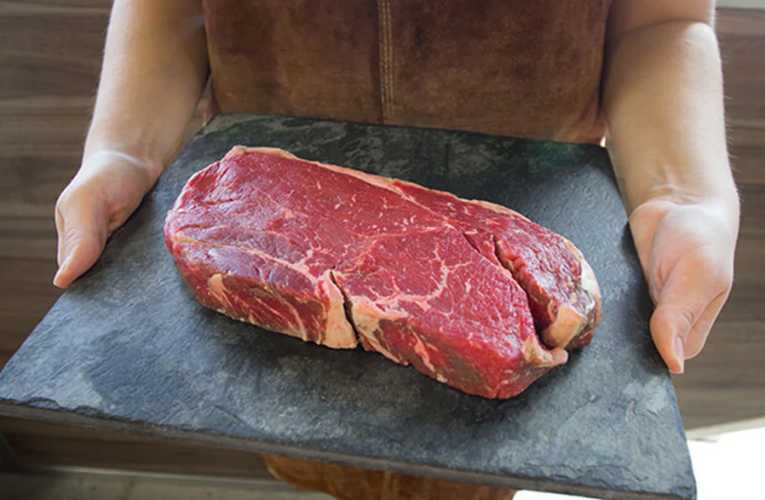
Dimensions and Appearance:
An 8 oz steak typically measures around 1 inch to 1.5 inches in thickness, depending on the cut and the desired level of doneness. It generally covers a plate area of approximately 4 inches by 5 inches. However, it’s important to note that the dimensions may vary slightly based on the specific cut and shape of the steak.
Examples of Cuts:
Various cuts can yield an 8 oz steak, including ribeye, New York strip, and T-bone. These cuts offer a good balance of flavor, tenderness, and juiciness, making them popular choices among steak enthusiasts.
What Does a 5 oz Steak Look Like?
A 5 oz steak is a smaller portion size compared to the 8 oz steak. Let’s explore its appearance, dimensions, and characteristics to give you a better understanding of its size.
Visual Representation:
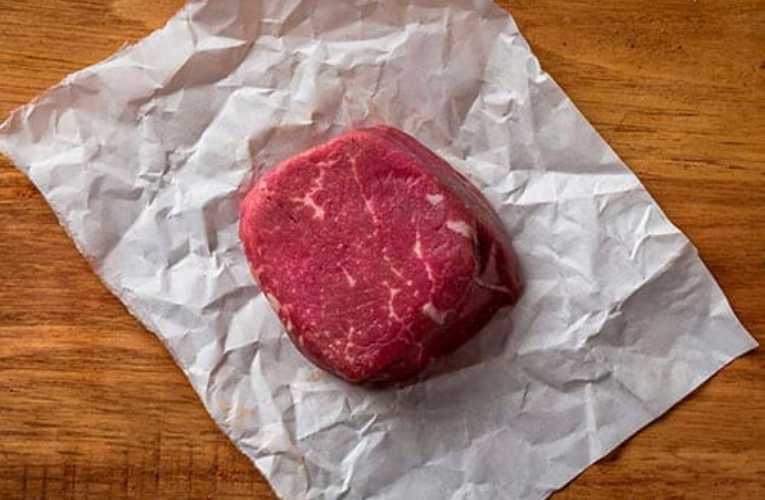
Dimensions and Appearance:
A 5 oz steak is typically thinner than an 8 oz steak, measuring around 0.75 inches to 1 inch in thickness. Its plate coverage is smaller, usually occupying an area of approximately 3 inches by 4 inches. Again, it’s important to note that the specific cut and shape of the steak can cause slight variations in dimensions.
Examples of Cuts:
Cuts that commonly yield a 5 oz steak include filet mignon (also known as tenderloin) and petite sirloin. These cuts are known for their tenderness and delicate flavor profile.
Understanding Serving Portions:
When discussing steak sizes, it’s important to differentiate between portion size and recommended intake. The size of the steak portion you choose may depend on various factors, including personal preferences, dietary needs, and accompanying dishes.
Differentiating Portion Size and Recommended Intake:
Steak portion size refers to the amount of steak you serve or order, such as 8 oz or 5 oz. On the other hand, recommended intake refers to the suggested amount of steak for a balanced and nutritious meal.
It’s important to consider your individual needs and consult with a healthcare professional or nutritionist if you have specific dietary requirements.
Pairing Steak Sizes with Side Dishes and Accompaniments:
The choice of steak size can also be influenced by the side dishes and accompaniments you plan to serve. For example, if you’re serving a variety of side dishes or planning a multi-course meal, a smaller 5 oz steak may be sufficient. Conversely, if you’re looking for a more substantial and filling meal, an 8 oz steak might be more suitable.
Cooking Techniques for Different Steak Sizes:
The cooking method you choose for your steak can have an impact on its final flavor, tenderness, and overall dining experience. Here, we’ll explore some popular cooking techniques for both 8 oz and 5 oz steaks.
Grilling an 8 oz Steak:
Grilling is a beloved method for cooking steaks, especially larger cuts like the 8 oz steak. Here are some key considerations for grilling an 8 oz steak:
- Preheat the grill: Ensure that your grill is preheated to the appropriate temperature, usually around 450°F to 500°F (232°C to 260°C).
- Seasoning: Apply your desired seasonings or marinade to enhance the flavor of the steak. Allow the steak to come to room temperature before grilling.
- Grill time: The cooking time will vary based on the desired level of doneness and the thickness of the steak. As a general guideline, you can grill an 8 oz steak for approximately 4-6 minutes per side for medium-rare.
- Resting: Once the steak is cooked to your desired level, remove it from the grill and let it rest for a few minutes before serving. This allows the juices to redistribute, resulting in a more tender and flavorful steak.
Pan-Searing a 5 oz Steak:
Pan-searing is a suitable method for smaller steaks like the 5 oz steak. Here’s how you can achieve a delicious pan-seared 5 oz steak:
- Heat the pan: Heat a skillet or frying pan over medium-high heat and add a small amount of oil or butter.
- Seasoning: Season the steak with salt, pepper, or your preferred seasonings. Allow the steak to come to room temperature.
- Searing: Place the steak in the hot pan and let it cook undisturbed for a few minutes on each side. The exact cooking time will depend on the thickness of the steak and the desired level of doneness. As a general guideline, you can sear a 5 oz steak for approximately 2-3 minutes per side for medium-rare.
- Resting: After cooking, remove the steak from the pan and let it rest for a few minutes before serving. This allows the juices to settle and ensures a more tender and flavorful steak.
Alternative Cooking Methods for Each Steak Size:
While grilling and pan-searing are popular cooking methods, there are various alternatives to explore for both 8 oz and 5 oz steaks. These include broiling, sous vide, and oven roasting. Each method offers a unique cooking experience and can be adapted to suit your preferences and available equipment.
Exploring the Culinary Experience:
The size of your steak can influence the overall culinary experience, including taste, tenderness, and flavor balance. Let’s delve into the factors to consider when preparing and enjoying 8 oz and 5 oz steaks.
Taste and Tenderness Considerations:
An 8 oz steak, with its larger size, often provides a more substantial and satisfying bite. It tends to have a bolder flavor profile and can retain juiciness when cooked correctly. On the other hand, a 5 oz steak offers a more delicate and tender experience, ideal for those who prefer a milder flavor and a melt-in-your-mouth texture.
Balancing Flavors and Seasonings Based on Steak Size:
The size of the steak can affect how flavors and seasonings penetrate the meat. With an 8 oz steak, you might consider bolder seasonings and marinades to complement the meat’s robustness. Conversely, a 5 oz steak may benefit from more delicate seasonings that enhance its natural flavors without overpowering them.
Pairing Wines or Beverages with 8 oz and 5 oz Steaks:
The choice of beverage can enhance the overall dining experience when enjoying steaks of different sizes. When pairing wines or other beverages, consider the flavor profiles of both the steak and the drink. For an 8 oz steak, full-bodied red wines like Cabernet Sauvignon or Malbec can complement its richness. With a 5 oz steak, lighter reds such as Pinot Noir or a crisp white wine like Sauvignon Blanc can provide a harmonious pairing.
Choosing the Right Steak Size for You:
When it comes to selecting a steak size, personal preferences and dietary considerations play a significant role. Here are some factors to consider when choosing between an 8 oz and 5 oz steak:
Assessing Personal Preferences and Appetite:
Consider your appetite and how much steak you typically enjoy in a meal. If you prefer larger portions or have a hearty appetite, an 8 oz steak may be a better choice. However, if you prefer lighter meals or want to balance the steak with other dishes, a 5 oz steak could be more suitable.
Dietary Considerations and Health Implications:
If you’re following a specific diet or have dietary restrictions, the size of the steak can impact your nutrient intake. For example, if you’re watching your calorie or protein intake, a smaller 5 oz steak might align better with your dietary goals. It’s always advisable to consult with a healthcare professional or nutritionist to determine the appropriate portion size for your needs.
Flexibility and Experimentation:
Remember that steak sizes are not fixed, and you have the flexibility to experiment and explore different options. Don’t be afraid to try different sizes and cuts to discover your personal favorites. You may find that your preferences evolve over time or vary based on the occasion.
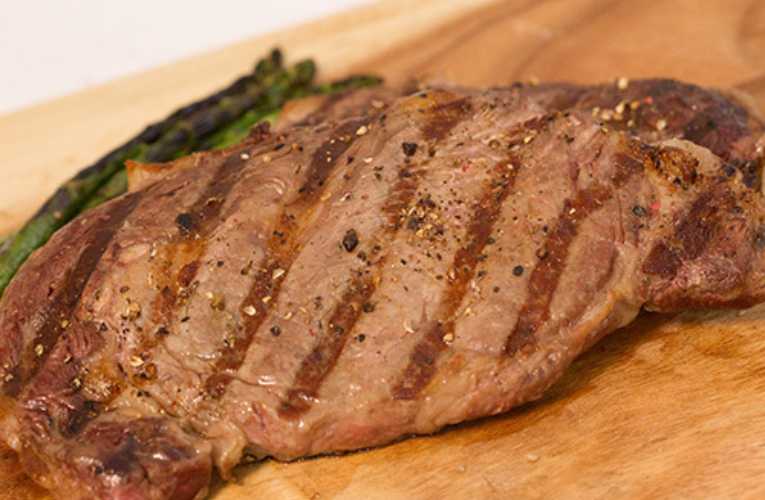
Conclusion:
Understanding the size differences between 8 oz and 5 oz steaks allows you to make informed choices when ordering or cooking. By grasping the dimensions, appearance, and characteristics of each size, as well as considering personal preferences and dietary needs, you can create a delightful dining experience tailored to your taste. Whether you opt for the heartiness of an 8 oz steak or the delicate tenderness of a 5 oz steak, exploring the world of steaks in various sizes is sure to satisfy your culinary cravings.
Frequently Asked Questions:
Is the weight of a steak inclusive of bone or just the meat?
The weight mentioned for steaks typically refers to the meat only, unless otherwise specified. If a bone-in steak is mentioned, the weight may include the bone.
Are there any health considerations when choosing between an 8 oz and 5 oz steak?
The size of the steak can impact your calorie and protein intake. If you’re watching your calorie or protein intake, a smaller 5 oz steak might be a better choice. However, it’s important to consider your overall dietary needs and consult with a healthcare professional or nutritionist for personalized advice.
Can the thickness of a steak vary within the same weight category?
Yes, the thickness of a steak can vary within the same weight category. Factors such as the cut and personal preference can influence the thickness. It’s important to note that the cooking time and desired level of doneness may vary depending on the thickness.
Are there recommended cooking times for 8 oz and 5 oz steaks?
The cooking times for steaks can vary based on factors such as thickness, desired level of doneness, and cooking method. As a general guideline, an 8 oz steak may take approximately 4-6 minutes per side for medium-rare when grilled, while a 5 oz steak may take around 2-3 minutes per side for medium-rare when pan-seared. However, it’s best to use a meat thermometer and follow specific recipes or cooking guidelines for accurate results.
Can I use the same seasonings and marinades for both 8 oz and 5 oz steaks?
While you can use similar seasonings and marinades for both steak sizes, it’s important to consider the flavors and the intensity of the cuts. For an 8 oz steak, bolder seasonings and marinades can complement its robustness, while a 5 oz steak may benefit from more delicate seasonings to enhance its natural flavors without overpowering them.
Can I mix and match different steak sizes when serving multiple people?
Absolutely! Mixing and matching steak sizes can cater to different preferences and appetites. It allows you to offer variety and accommodate individual choices. Just ensure that you adjust the cooking times accordingly to ensure that all steaks are cooked to the desired level of doneness.
Can I have a smaller or larger portion of an 8 oz or 5 oz steak at a restaurant?
Yes, most restaurants offer flexibility in portion sizes. You can inquire if they can accommodate your request for a smaller or larger portion based on your preference.
Are there any other popular steak sizes apart from 8 oz and 5 oz?
Yes, there is a wide range of steak sizes available. Other common sizes include 6 oz, 10 oz, 12 oz, and larger cuts like 16 oz or 24 oz, which are often referred to as “porterhouse” or “T-bone” steaks.
Can the weight of a steak vary within the same size category?
Yes, the weight of a steak can vary slightly depending on factors such as the cut of meat, trimming, and the precision of the butcher’s cut. It’s normal to encounter slight variations within the same size category.
How can I accurately measure the weight of a steak at home?
To measure the weight of a steak accurately, you can use a kitchen scale. Place the steak on the scale and ensure it is centered to obtain an accurate reading. This is particularly useful when following specific recipes or dietary guidelines.
What are some recommended side dishes to pair with 8 oz and 5 oz steaks?
For 8 oz steaks, consider heartier side dishes like roasted potatoes, grilled vegetables, or a Caesar salad. With 5 oz steaks, you have more flexibility to include lighter sides such as steamed asparagus, quinoa salad, or garlic sautéed mushrooms.
Can I use the same cooking techniques for different cuts of meat within the same steak size?
While cooking techniques generally apply to various cuts of meat, it’s important to consider the specific characteristics of each cut. For example, a tenderloin (filet mignon) might require slightly less cooking time compared to a New York Strip due to differences in tenderness.
Are there any health considerations to keep in mind when choosing between 8 oz and 5 oz steaks?
Choosing between 8 oz and 5 oz steaks can be influenced by your dietary goals and overall health considerations. If you’re aiming for a lower calorie intake, a 5 oz steak might be more suitable. However, it’s important to consult with a healthcare professional or nutritionist for personalized guidance.
Can I freeze leftover 8 oz or 5 oz steaks for future use?
Yes, both 8 oz and 5 oz steaks can be safely frozen for later consumption. Make sure to wrap the steaks tightly in freezer-safe packaging or use a vacuum sealer to maintain quality. Thaw them properly in the refrigerator before reheating or cooking.

